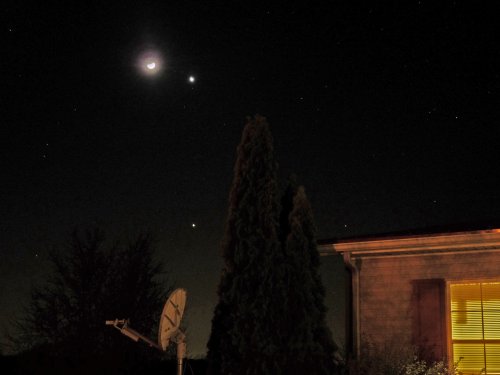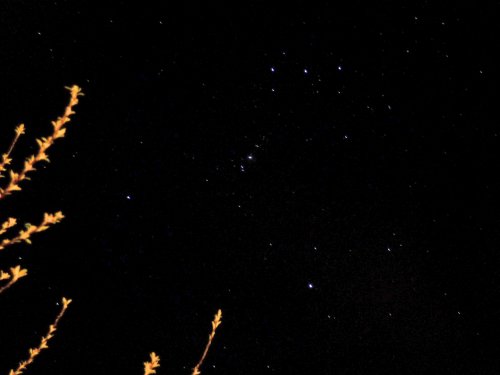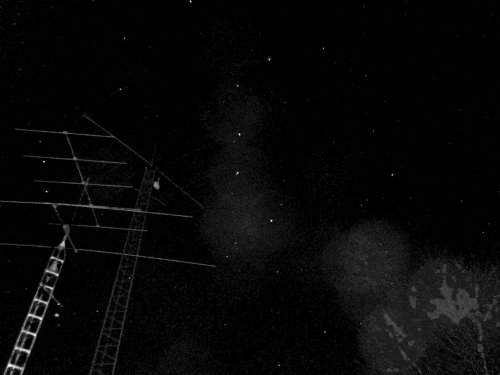It was nearly two weeks ago on a clear night that I went out with camera and tripod to capture some celestial images. I’ve enjoyed watching the waxing crescent moon as it was in the vicinity of Jupiter and Mars as the sun set. I also enjoy taking pictures of the sky. Jupiter and Venus are very bright and thus easily captured on the CCD of our point-and-shoot digital camera. The moon is even brighter.
With equipment in hand, I headed for the back door pausing to check camera settings inside where there was good light. As I checked the scene setting, I saw there was a “starry sky” setting. Why had this gone unnoticed? And, oh look, you can set for 15, 30 or 60-second exposure. With the tripod, I could use that. I chose 15 seconds–the moon would be in the shot and it is very bright.
Did it work? Here’s your answer:
I was amazed at how many stars I could see after I had processed the images a little bit with PhotoShop Elements. Thus encouraged, I turned to my left and looking Southwest I saw Orion (the hunter). I repositioned the tripod and camera to get this shot.
The viewfinder on the Panasonic camera was not designed for taking shots like this. I used the apple branches, which were illuminated by the sodium vapor yard light, to point the camera. A little bit of processing and more stars became visible. The three stars of the belt and the three of the sword are very clearly visible–even before processing. I was pleased to see that the nebula in the center of the sword shows well.
Thus encouraged, I turned to a darker area of the sky as I tried to capture an image of the big dipper (Ursa Major). The first couple of attempts didn’t work too well, and I had a hard time pointing the camera in the right direction. Nevertheless, I did manage to get a piece of the dipper.
It was my best effort, but it doesn’t include the pointer stars that indicate the direction of the pole star (Polaris). I did get the handle and the two stars that form the handle end of the dipper. Can you see the double star in the second position (from the end) of the handle? As with the other images, I didn’t know what was there until after a bit of processing. I’m waiting for the next clear night with suitable conditions so I can go out and try some more shots. It should be a night with the moon not visible. Last night was the full moon, which rises at sunset and sets at sunrise. Perhaps another few days?




I love the nights skies out here in the middle of nowhere. So many stars. I’m especially fond of the Pleiades
The Pleiades are a beautiful jewel box that graces the skies. They are very special.
Beautiful! Just think– one day, we’ll be looking down from the other side. LOL
And we will look at it with perfect eyes.